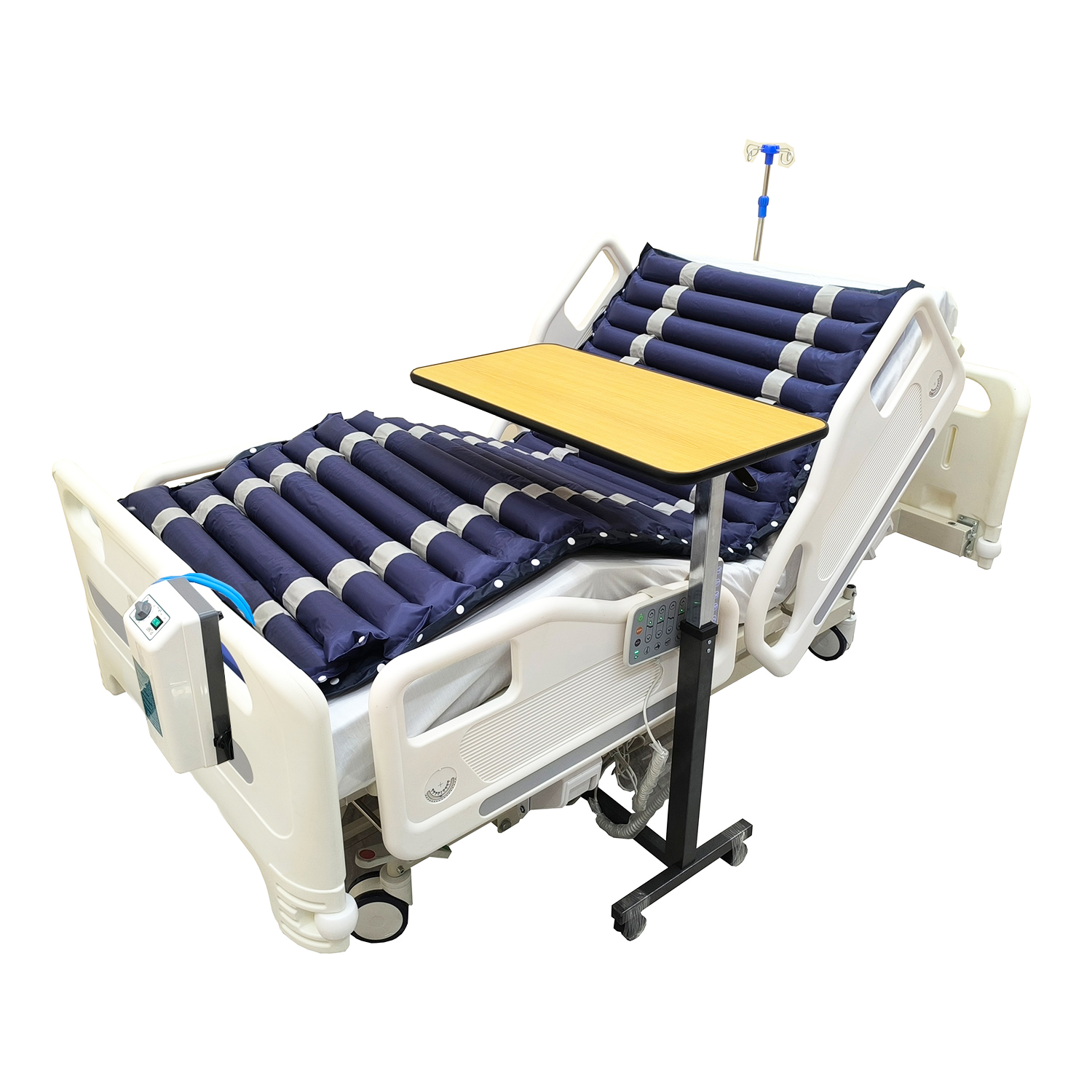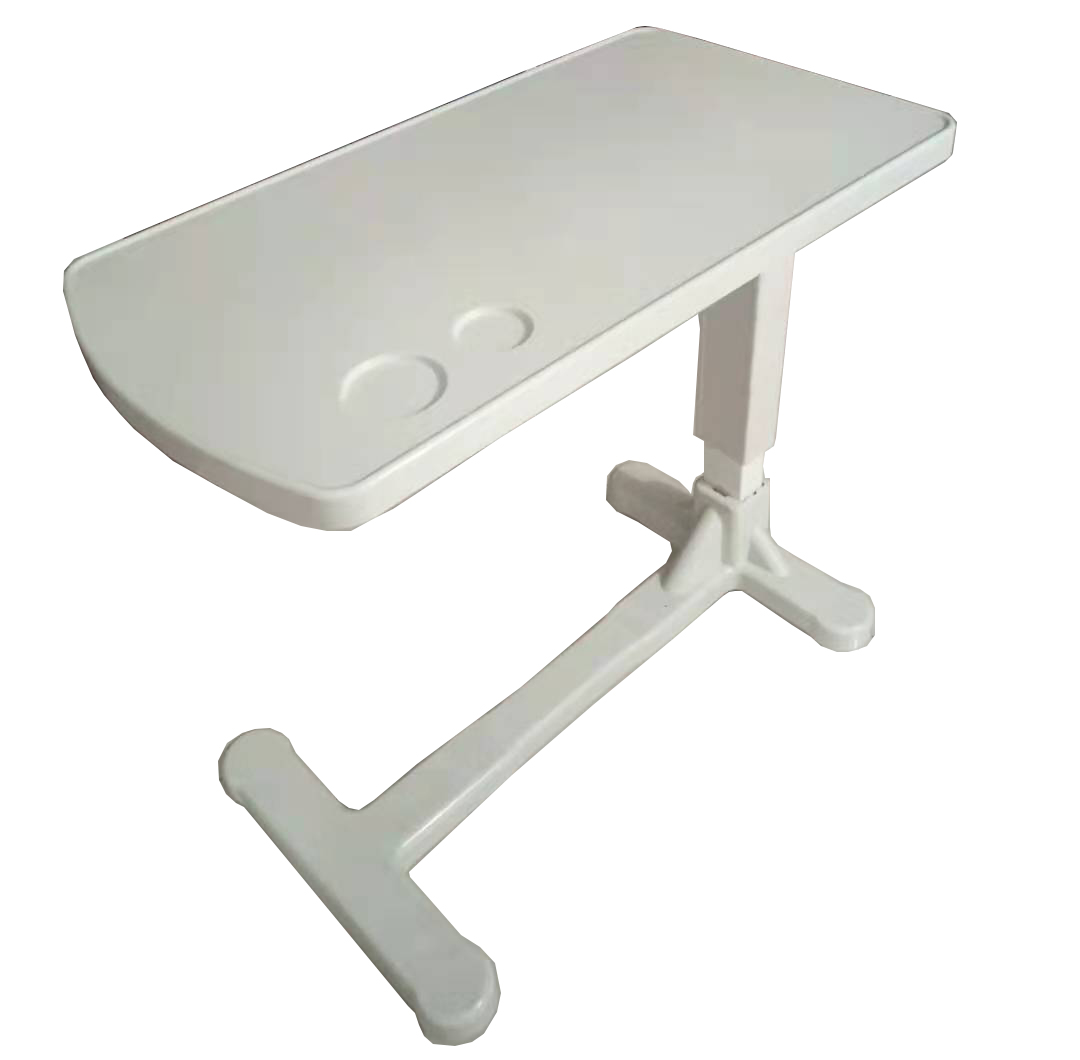What Can An Overbed Table Be Used For in hospital? That simple hospital overbed table might look ordinary. In my experience, it’s a patient’s best tool for meals, hobbies, and so much more. These tables are a fixture in every hospital room.
Patient’s Daily Helper
From my experience, overbed tables are one of the most important pieces of furniture in a hospital. They provide vital support for a patient’s day-to-day needs. I think they are an absolute must-have.
Making Meal Times Easier
I believe the main purpose of an overbed table is to help a patient eat. It lets them have meals in bed or while sitting in a chair without extra effort.
A study showed that 100% of patients used their hospital overbed table for meals, both in bed and in a chair.
I suggest that proper table placement is key. If the table is not in the right spot, patients might find it hard to eat. This can cause discomfort and make them feel less independent.
A Personal Area for Work and Fun
I notice the table also gives patients a solid surface for their activities. They can use it for reading, writing, using a laptop, or doing crafts.
These tables change the patient’s personal space. It becomes a small work area or a hobby zone. I’ve seen this make long hospital stays much more pleasant and interesting.
Adjustable tilt-top tables make it simpler to read or use a tablet.
Dual-surface models allow patients to have a meal on one side while keeping a book or phone on the other.
Keeping Your Items Close
Another key benefit is having a place for personal items. I recommend using it for phones, glasses, books, or tablets.
For most patients, this table is the main spot for everything they need. It holds remote controls, drinks, tissues, and medical supplies right where they can reach them.
Clinical and Medical Uses of Overbed Tables
Based on my experience, overbed tables are key tools in hospitals. They help with many medical tasks, supporting both patients and the healthcare team.

Giving Out Medicine
I’ve seen overbed tables used all the time for giving medicine at the bedside.
Nurses use the table to get medicines ready, organize them, and give them out smoothly where the patient can see everything.
I believe this process improves safety and helps ensure accuracy.
Supporting Medical Procedures
For tasks like changing wound dressings, we need a clean, easy-to-reach surface. The overbed table is what we use.
Doctors and nurses arrange clean instruments, dressings, and sanitizers on the table. This keeps everything handy.
This method helps us keep the area sterile. It also reduces extra movement, which I feel improves the quality of care.
Checking Vital Signs
When we check vital signs, we place devices like blood pressure cuffs and thermometers on the overbed table.
The table’s height can be adjusted, which I find helps our staff work better. It keeps all the equipment organized and easy to see.
This setup makes our workflow smoother and helps us document information correctly.
Storing Medical Equipment
I suggest using overbed tables as a temporary spot for medical equipment and supplies. They are great for organizing things during patient care.
You will often find wound care kits, IV supplies, gloves, syringes, patient charts, and tablets on these tables.
Almost all clinical staff use them. In fact, one study showed that 100% of staff use overbed tables at the bedside. This just shows how important they are for good, patient-focused care.
Improving Care and Recovery
I think overbed tables are useful surfaces for direct patient care, both in urgent situations and during rehabilitation.
Doctors have recently designed improvements. Their goal is to make these tables even safer and easier to access.
We use them constantly, which shows how vital they are in any modern hospital. They balance patient comfort with our need to work effectively.
Support for Healthcare Staff
From my experience, overbed tables are essential tools for hospital staff. They serve as mobile workstations for important everyday tasks.
Efficient Workspaces for Documentation
I think these features help nurses and doctors manage their paperwork and electronic records right at the patient’s bedside.
You’ll find that one-third to two-thirds of table models have these storage options. This helps staff finish documentation faster and stay organized.

Ergonomic Support for Medical Tasks
I recommend tables with an adjustable design. This lets staff change the table’s height and surface angle to fit different medical tasks.
Double-sided height adjustment buttons support a range from 685 mm to 1100 mm.
Some tables have work surfaces as wide as 810 mm. This gives staff enough space for consultations and preparing supplies. They won’t need to bring extra equipment into the room.
Mobility and Convenient Access
I suggest looking for tables with strong wheels and light materials like ABS. These make the tables easy to move.
Over two-thirds of table models are built for easy transport. They are easy to steer and often include built-in storage drawers.
Staff can bring medication trays, medical tools, and other devices to any bedside. I believe this streamlines their workflow and leads to faster patient care.
Enhancing Productivity and Bedside Care
In my opinion, overbed tables help staff be more productive and comfortable. They offer a mobile workspace that is organized and easy to customize.
These features support better bedside care. They reduce extra trips and improve the work posture for every healthcare worker.
So, I believe the design of an overbed table has a clear impact on the quality, speed, and comfort of hospital work for the staff.
Helping Patients Feel Comfortable and Independent
In my experience, overbed tables are crucial for a patient’s comfort and independence in the hospital. These tables let patients do many things right from their bed. They can eat, read, or use a phone or tablet. They can also keep personal items close by, so they don’t have to ask for help as often. I believe this gives patients a sense of control and truly helps their well-being while they recover.

-
Full Patient Use: All patients (100%) said they used their overbed table for everyday activities. They used it while in bed or sitting in a chair. From my perspective, this shows the table is essential. It helps people keep a normal routine during their recovery.
-
Emotional Health: When patients can do personal tasks on their own, they feel less isolated. I feel that having control over your daily life gives you a mental lift. It’s a big part of feeling emotionally comfortable in a hospital.
-
Meets Patient Needs: I find the adjustable design and easy movement of these tables very helpful. This is true for patients who can’t move around much. A patient can place the table right over their lap. They can also move it aside with little effort. This makes it comfortable for many things, like eating a meal or even doing recovery exercises.
-
Help with Moving: I also noticed that 74% of hospital staff said these tables help patients get out of bed. This offers another level of physical support and independence.
-
Safety and Simple Use: I recommend these tables because they are built to be safe. They help prevent spills, falls, or dropped items. This protects the patient and makes the caregiver’s job simpler and more efficient. Being able to place the table where it’s needed means less risky movement for the patient. This lowers the chance of injury.
Based on my experience, these tables improve a patient’s comfort, independence, and safety. I think they are a must-have piece of equipment in any modern hospital.
My Favorite Features That Make These Tables Easy to Use
From my experience, modern hospital overbed tables have many features. These features make them useful and simple to use in any hospital or clinic.
Adjustable Height for a Custom Fit
I find that most overbed tables have adjustable height controls. This lets patients and caregivers set the table to the perfect height.
Many tables use “one-touch” or single-hand controls. This allows anyone to move the table without effort. I think this is critical for the many adjustments required during patient care.
The height can adjust from 27.5” to 45” (70 cm to 114 cm). This range makes them work with most beds, chairs, and wheelchairs.
For example, third-party tests on Grace Medy’s models show they can handle 10,000 adjustments. This proves to me that they are strong and designed for comfort.
Strong and Easy-to-Clean Materials
I recommend tables with high-strength steel or aluminum bases. They stay sturdy, resist rust, and stand up to constant hospital use.
Coatings like epoxy or powder paint protect the metal from rust. This also makes them simple to clean and maintain.
Manufacturers make tabletops from strong materials. These include high-pressure laminate, molded composite, or ABS plastic. I’ve seen these surfaces withstand constant cleaning. They hold up to strong disinfectants to meet tough medical rules.

Easy to Move, Safe to Lock
The four swiveling wheels or casters are a great feature. I find they make it simple to roll the table to a bedside. You can also move it between rooms with no trouble.
In my opinion, having at least two locking casters is essential for safety. This keeps the table stable when patients eat or write.
I suggest looking for larger casters, up to 4 inches. They help the table roll with ease, even over floors that aren’t perfectly flat.
Multi-Purpose Tops for Different Activities
Many tables have optional tilting tops. This lets patients angle the surface. I believe this makes it much better for reading, using a laptop, or eating.
Some tables offer unique features. You can find concave tops or drop-leaf sides. These features support different patient activities and care requirements.
Built for Efficient and Clean Care
I see that every part of the hospital overbed table aims for two things. It should improve patient comfort and help staff work better.
When you combine easy adjustments, strong materials, simple movement, and flexible tops, you get a great table. In my experience, this combination ensures the tables can handle the constant demands of hospital care.
